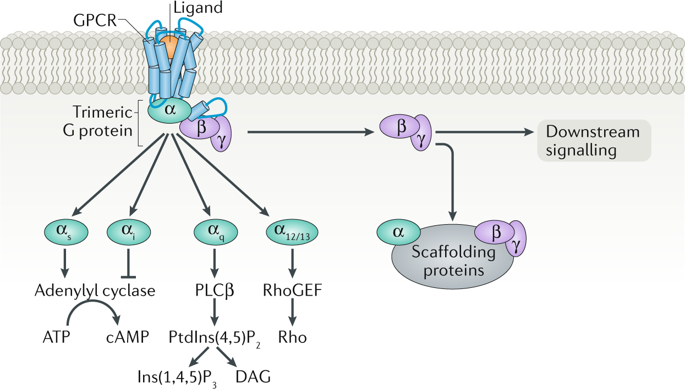当前位置:
X-MOL 学术
›
Nat. Rev. Cardiol.
›
论文详情
Our official English website, www.x-mol.net, welcomes your
feedback! (Note: you will need to create a separate account there.)
G protein-coupled receptor kinases as therapeutic targets in the heart.
Nature Reviews Cardiology ( IF 41.7 ) Pub Date : 2019-06-11 , DOI: 10.1038/s41569-019-0220-3 Jessica Pfleger 1 , Kenneth Gresham 1 , Walter J Koch 1
Nature Reviews Cardiology ( IF 41.7 ) Pub Date : 2019-06-11 , DOI: 10.1038/s41569-019-0220-3 Jessica Pfleger 1 , Kenneth Gresham 1 , Walter J Koch 1
Affiliation

|
G protein-coupled receptors (GPCRs) are critical cellular sensors that mediate numerous physiological processes. In the heart, multiple GPCRs are expressed on various cell types, where they coordinate to regulate cardiac function by modulating critical processes such as contractility and blood flow. Under pathological settings, these receptors undergo aberrant changes in expression levels, localization and capacity to couple to downstream signalling pathways. Conventional therapies for heart failure work by targeting GPCRs, such as β-adrenergic receptor and angiotensin II receptor antagonists. Although these treatments have improved patient survival, heart failure remains one of the leading causes of mortality worldwide. GPCR kinases (GRKs) are responsible for GPCR phosphorylation and, therefore, desensitization and downregulation of GPCRs. In this Review, we discuss the GPCR signalling pathways and the GRKs involved in the pathophysiology of heart disease. Given that increased expression and activity of GRK2 and GRK5 contribute to the loss of contractile reserve in the stressed and failing heart, inhibition of overactive GRKs has been proposed as a novel therapeutic approach to treat heart failure.
中文翻译:

G蛋白偶联受体激酶作为心脏中的治疗靶标。
G蛋白偶联受体(GPCR)是介导众多生理过程的关键细胞传感器。在心脏中,多种GPCR在各种细胞类型上表达,它们通过调节诸如收缩力和血流等关键过程来协调调节心脏功能。在病理情况下,这些受体在表达水平,定位和与下游信号传导途径偶联的能力上经历异常变化。心力衰竭的常规疗法通过靶向GPCR(例如β-肾上腺素受体和血管紧张素II受体拮抗剂)起作用。尽管这些疗法改善了患者的生存率,但心力衰竭仍然是全球范围内导致死亡的主要原因之一。GPCR激酶(GRK)负责GPCR的磷酸化作用,因此会导致GPCR的脱敏和下调。在这篇综述中,我们讨论了参与心脏疾病病理生理的GPCR信号通路和GRKs。鉴于GRK2和GRK5的表达和活性增加导致压力和衰竭心脏的收缩储备丧失,已提出抑制过度活跃的GRKs作为治疗心力衰竭的新方法。
更新日期:2019-06-11
中文翻译:

G蛋白偶联受体激酶作为心脏中的治疗靶标。
G蛋白偶联受体(GPCR)是介导众多生理过程的关键细胞传感器。在心脏中,多种GPCR在各种细胞类型上表达,它们通过调节诸如收缩力和血流等关键过程来协调调节心脏功能。在病理情况下,这些受体在表达水平,定位和与下游信号传导途径偶联的能力上经历异常变化。心力衰竭的常规疗法通过靶向GPCR(例如β-肾上腺素受体和血管紧张素II受体拮抗剂)起作用。尽管这些疗法改善了患者的生存率,但心力衰竭仍然是全球范围内导致死亡的主要原因之一。GPCR激酶(GRK)负责GPCR的磷酸化作用,因此会导致GPCR的脱敏和下调。在这篇综述中,我们讨论了参与心脏疾病病理生理的GPCR信号通路和GRKs。鉴于GRK2和GRK5的表达和活性增加导致压力和衰竭心脏的收缩储备丧失,已提出抑制过度活跃的GRKs作为治疗心力衰竭的新方法。































 京公网安备 11010802027423号
京公网安备 11010802027423号